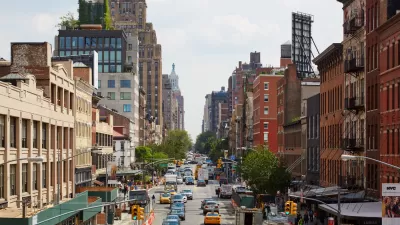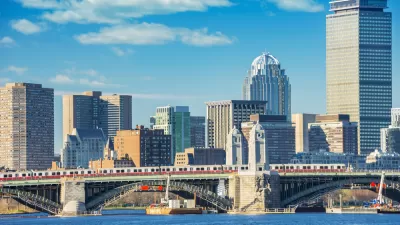An interview with architect and developer Marcel Wisznia on why architects should develop their own projects.
Marcel says he learned from his father, Walter Wisznia, that too often architects are asked to draw up proposals for projects that are never realized. Walter began developing his own projects as 20% of the firm's business, and Marcel turned that into 80%:
"I had gotten tired of taking the time necessary to educate clients. I realized for a client to make good design decisions, an architect must spend a lot of time educating. In many cases, the enlightenment comes through an architect's effort to show that a well-designed and cohesive solution will rent or sell for more than one that is solely bottom-line, numbers-driven.
Today, architects say I am lucky to 'wear both hats' - that I can do whatever I want without having to sell our solution to the client. In fact, my firm faces the same difficult daily decisions required to turn any project from a dream to reality."
Read the rest of the interview at the AIA, conducted by Mike Singer.
FULL STORY: Marcel Wisznia, AIA: Think Like an Architect, Build Like a Developer

Alabama: Trump Terminates Settlements for Black Communities Harmed By Raw Sewage
Trump deemed the landmark civil rights agreement “illegal DEI and environmental justice policy.”

Planetizen Federal Action Tracker
A weekly monitor of how Trump’s orders and actions are impacting planners and planning in America.

The 120 Year Old Tiny Home Villages That Sheltered San Francisco’s Earthquake Refugees
More than a century ago, San Francisco mobilized to house thousands of residents displaced by the 1906 earthquake. Could their strategy offer a model for the present?

Indy Neighborhood Group Builds Temporary Multi-Use Path
Community members, aided in part by funding from the city, repurposed a vehicle lane to create a protected bike and pedestrian path for the summer season.

Congestion Pricing Drops Holland Tunnel Delays by 65 Percent
New York City’s contentious tolling program has yielded improved traffic and roughly $100 million in revenue for the MTA.

In Both Crashes and Crime, Public Transportation is Far Safer than Driving
Contrary to popular assumptions, public transportation has far lower crash and crime rates than automobile travel. For safer communities, improve and encourage transit travel.
Urban Design for Planners 1: Software Tools
This six-course series explores essential urban design concepts using open source software and equips planners with the tools they need to participate fully in the urban design process.
Planning for Universal Design
Learn the tools for implementing Universal Design in planning regulations.
Clanton & Associates, Inc.
Jessamine County Fiscal Court
Institute for Housing and Urban Development Studies (IHS)
City of Grandview
Harvard GSD Executive Education
Toledo-Lucas County Plan Commissions
Salt Lake City
NYU Wagner Graduate School of Public Service





























